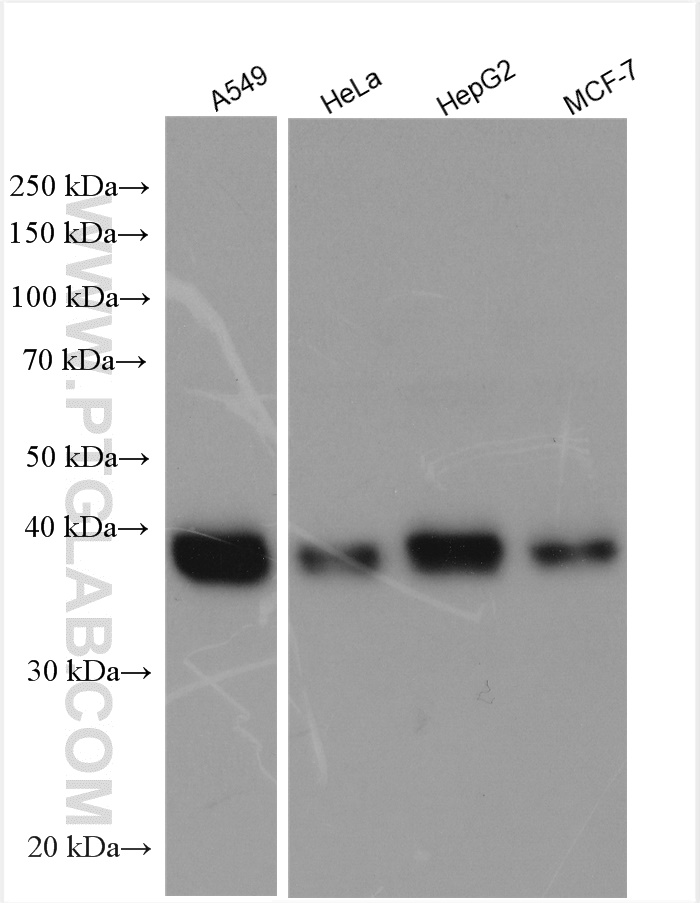验证数据展示
发表文章中的应用
| KD/KO | See 1 publications below |
| WB | See 1 publications below |
产品信息
10535-1-AP targets B4GALT7 in WB, ELISA applications and shows reactivity with human samples.
| 经测试应用 | ELISA Application Description |
| 文献引用应用 | WB |
| 经测试反应性 | human |
| 文献引用反应性 | human |
| 免疫原 | B4GALT7 fusion protein Ag0793 种属同源性预测 |
| 宿主/亚型 | Rabbit / IgG |
| 抗体类别 | Polyclonal |
| 产品类型 | Antibody |
| 全称 | xylosylprotein beta 1,4-galactosyltransferase, polypeptide 7 (galactosyltransferase I) |
| 别名 | B4GAL T7, B4GALT7, Beta 1,4 GalTase 7, beta4Gal T7, XGALT 1, XGALT1, XGPT, XGPT1 |
| 计算分子量 | 37 kDa |
| 观测分子量 | 37 kDa |
| GenBank蛋白编号 | BC007317 |
| 基因名称 | B4GALT7 |
| Gene ID (NCBI) | 11285 |
| RRID | AB_2274457 |
| 偶联类型 | Unconjugated |
| 形式 | Liquid |
| 纯化方式 | Antigen affinity purification |
| UNIPROT ID | Q9UBV7 |
| 储存缓冲液 | PBS with 0.02% sodium azide and 50% glycerol , pH 7.3 |
| 储存条件 | Store at -20°C. Stable for one year after shipment. Aliquoting is unnecessary for -20oC storage. |
背景介绍
B4GALT7 (Beta-1,4-galactosyltransferase 7), also known as galactosyltransferase I, is involved in the formation of proteoglycans which are components of the extracellular matrix in connective tissues (PubMed: 10438455). The reduced activity of B4GALT7 results in delayed wound repair, altered migration, adhesion and contractility of patient fibroblasts (PMID: 16583246, PMID: 18158310). Mutations in B4GALT7 that also result in Spondylodysplastic (PMID: 24755949, PMID: 12417421).
实验方案
| Product Specific Protocols | |
|---|---|
| WB protocol for B4GALT7 antibody 10535-1-AP | Download protocol |
| Standard Protocols | |
|---|---|
| Click here to view our Standard Protocols |
